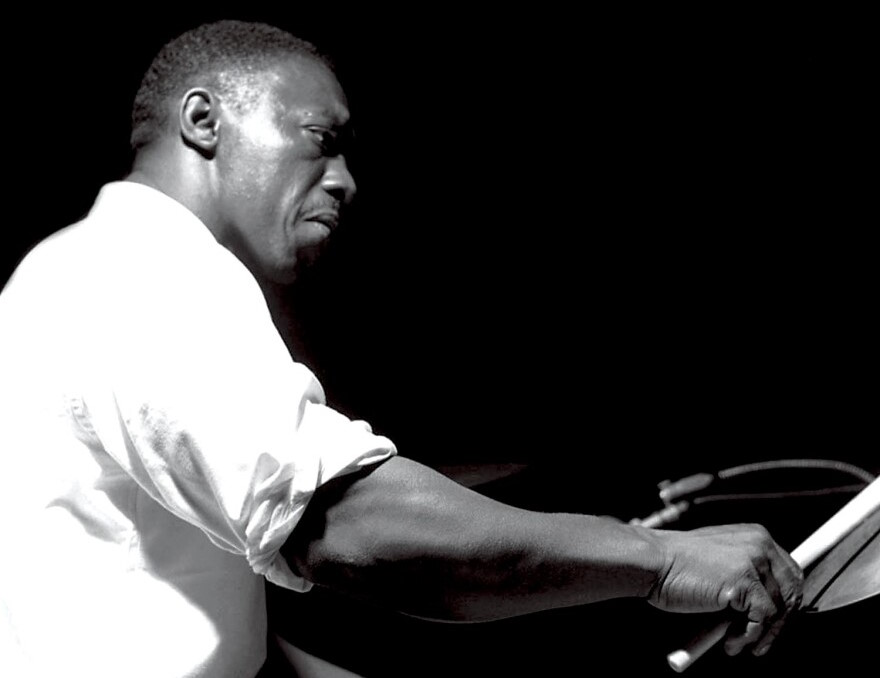 |
| The world is teeming with resources. |
I was just involved in an extended, very contentious online discussion on the topic of reading music— Is it good to be able to read? Is it better to learn, or to refuse to learn? Is refusing to learn to read good musicianship too? Why not? Questions of controversy.
The problem: people who can’t read music don’t know what reading music is, how and why it is done, or what it’s for, and form their own wrong ideas about those things, and then tell other people about it as if they know something.
A second order problem is that the same people often do not understand the nature of playing— on the drum set— which is to create a drumming accompaniment as you play it, with no preparation, on a piece of music you don’t know, and have never heard before. That’s the essence of playing, and reading is an extension of that natural thing. The chart is a guide for that— of varying specificity, depending on the situation, arranger, and employer.
Doing that kind of reading gives you clarity on what your job is as a drummer: playing time, figures, setups, fills, breaks, and percussion parts/effects (I’ll clarify that last distinction, drums vs. percussion another time), supporting phrases and form, following a roadmap.
Many drummers never have to do that kind of reading, and never do that kind of playing. They either play mostly familiar styles, forms and songs (or tunes), or their entire experience playing the drums is to learn “parts” from a recording, which they memorize and perform verbatim. When playing original music, they’ll work up their own parts in rehearsal, which they then perform verbatim. What good is learning to read for them?
It’s communication
In terms of learning and practicing the drums, notation is a very fast, and clear, and permanent form of communication to you, from people trying to help you pay better. It makes it easier for you to take in new drumming information, and for you to give information to others. And to form your own drumming ideas. It’s more permanent than a live demonstration, and faster than watching a video, or watching someone demonstrate it. It’s not reliant on any individual’s memory, perception, or perceptiveness.
It’s musical structure
Learning how to read notation requires understanding a whole lot of musical fundamentals— the entire system is nothing but symbols for things it’s important to know. What is a time signature, measure, beat, what are the rhythm values relative to each other? What are dynamics, tempo markings and alterations, articulations? What is a repeat, first and second ending, DS, DC, coda?
What are the note names, what are sharps and flats, what is a key signature, and therefore a key? What do the chord symbols mean, and what is the structure of the chords to which they refer? What is harmonic rhythm?
What can’t be notated
Thinking about areas of music that can’t be notated, we can get an idea of how non-reading people have to do things. Swing for example. “Feel.” Whatever else. These are mysterious things, subjects of endless subjective debate— they’re largely left up to the individual players, and their communities, to figure out. If somebody is not insightful in the right way, or is not exposed to the right stuff, and the right people, they’re likely to figure it out wrong.
Non-readers are like that about everything— what’s a beat, what’s a 16th note, what’s a time signature. It’s all mysterious, debatable, guessed at, figured out by vibe.
How to start
There are different levels of it— knowing enough so you can use drum books in the practice room vs. knowing how to read professional drum charts, vs. how far you want to go beyond that so you can play another instrument and/or compose.
Where it all begins is in learning to play basic stuff on a snare drum— playing through a beginning-level snare drum book. Most drummers would benefit by simply playing through the snare drum portion of book 1 of Rubank, and a basic drumset book. Funky Primer. Becoming expert at it is a long process, but the basics can be learned in a few lessons. Interpretive reading as is done with the book Syncopation can be done at virtually all levels of learning. Any and all reading situations are good— playing in school or community band or orchestra is extremely helpful, even if much of the time you are counting rests.

